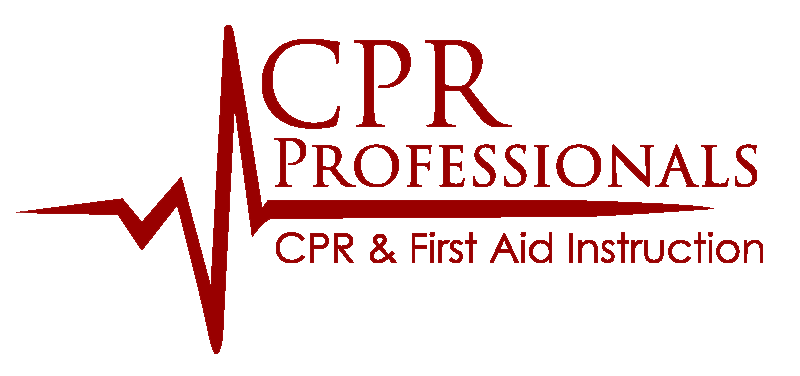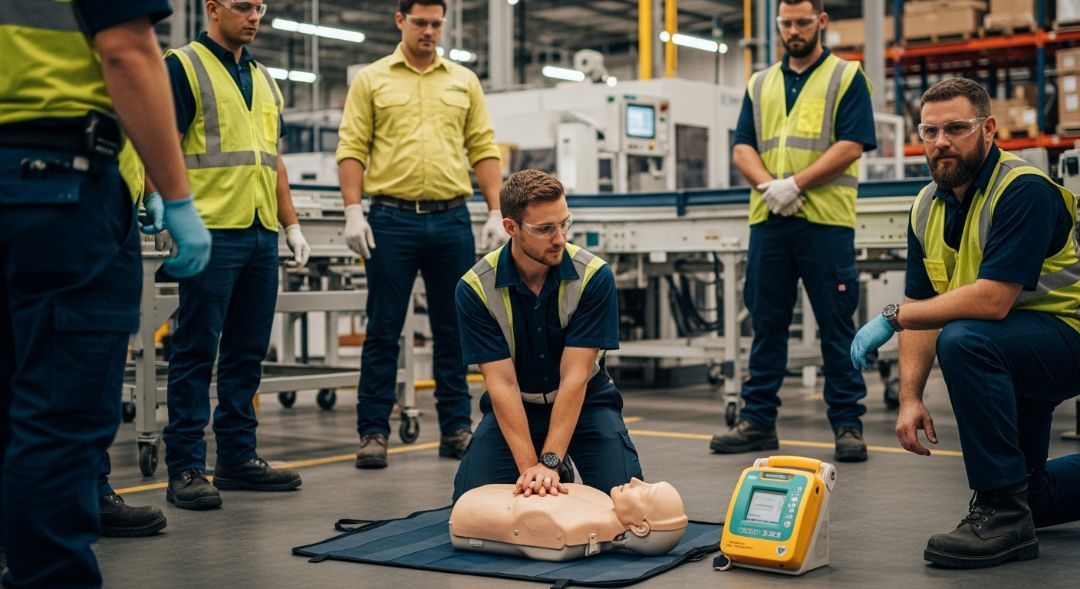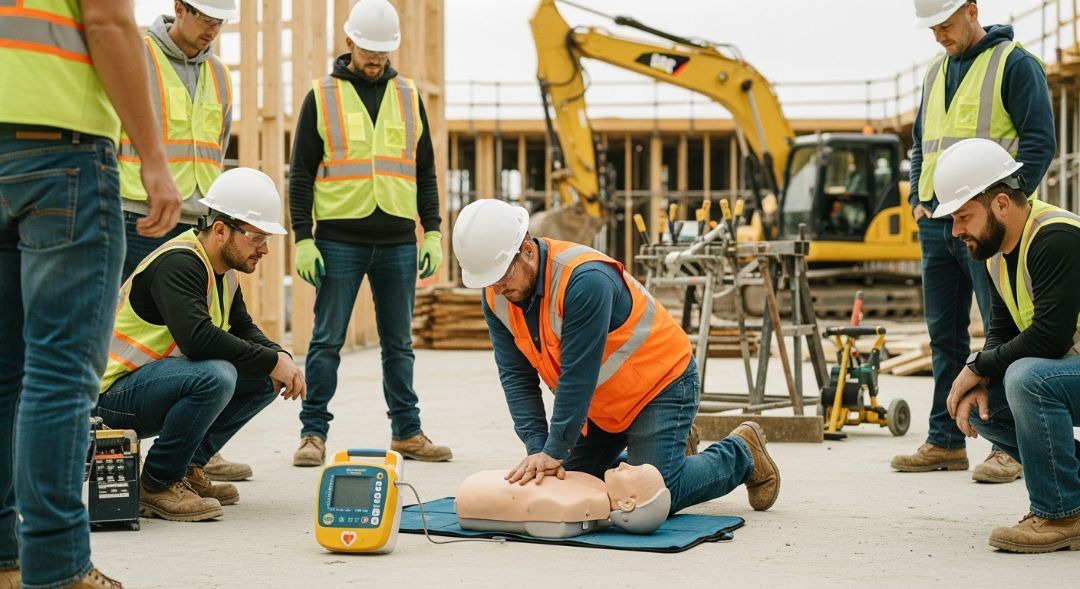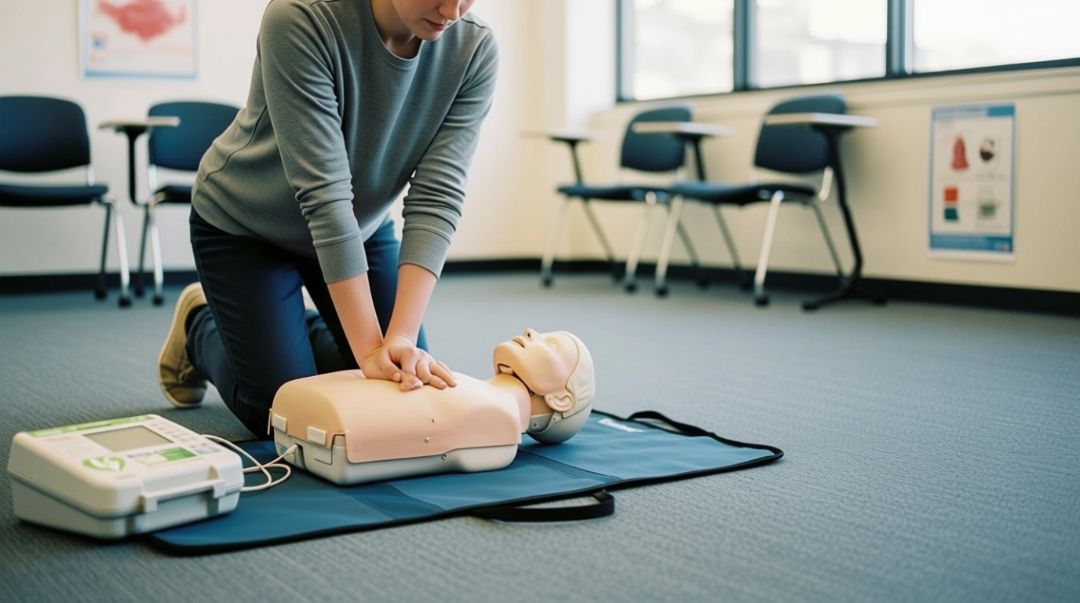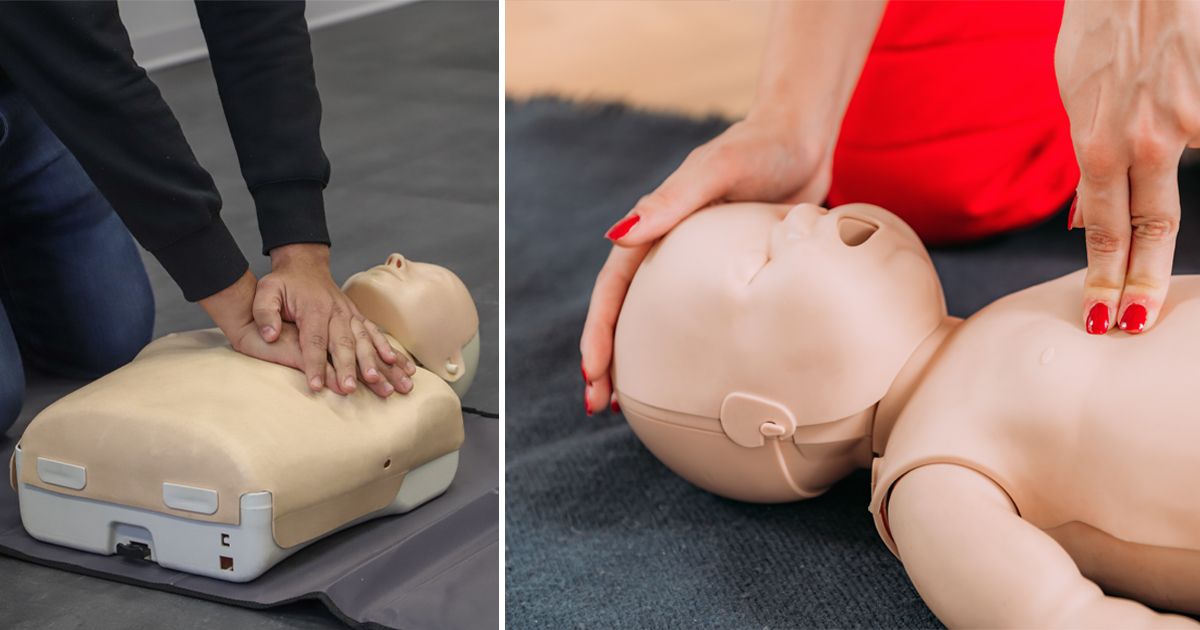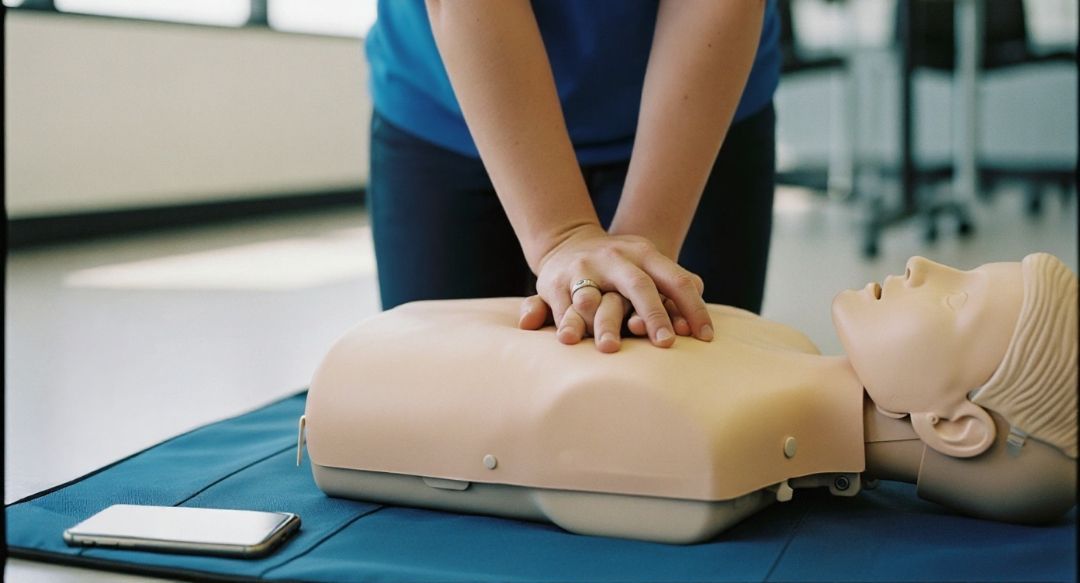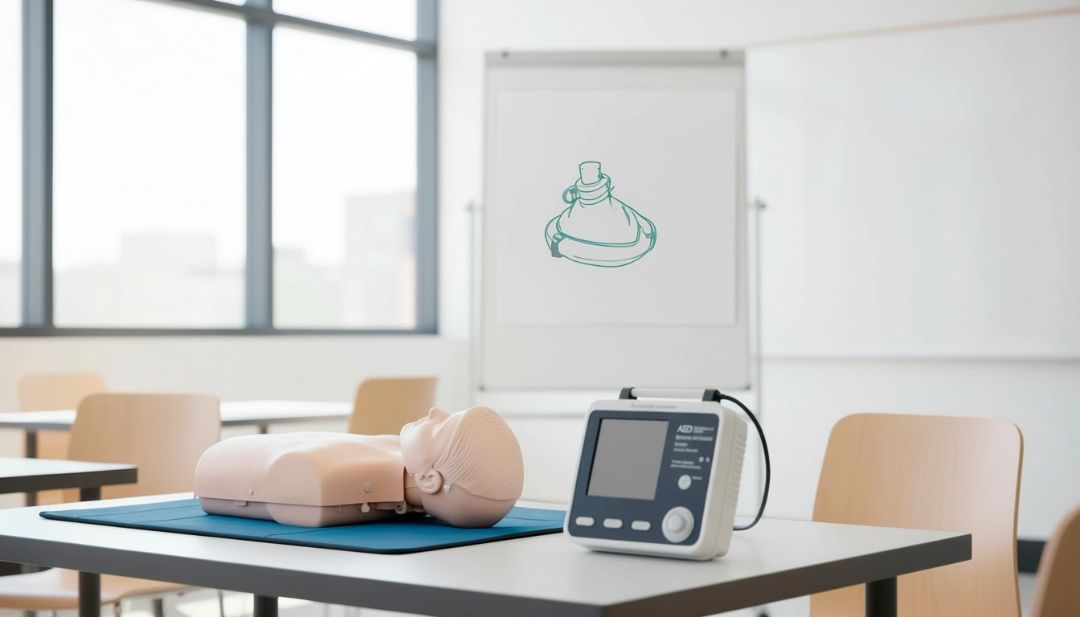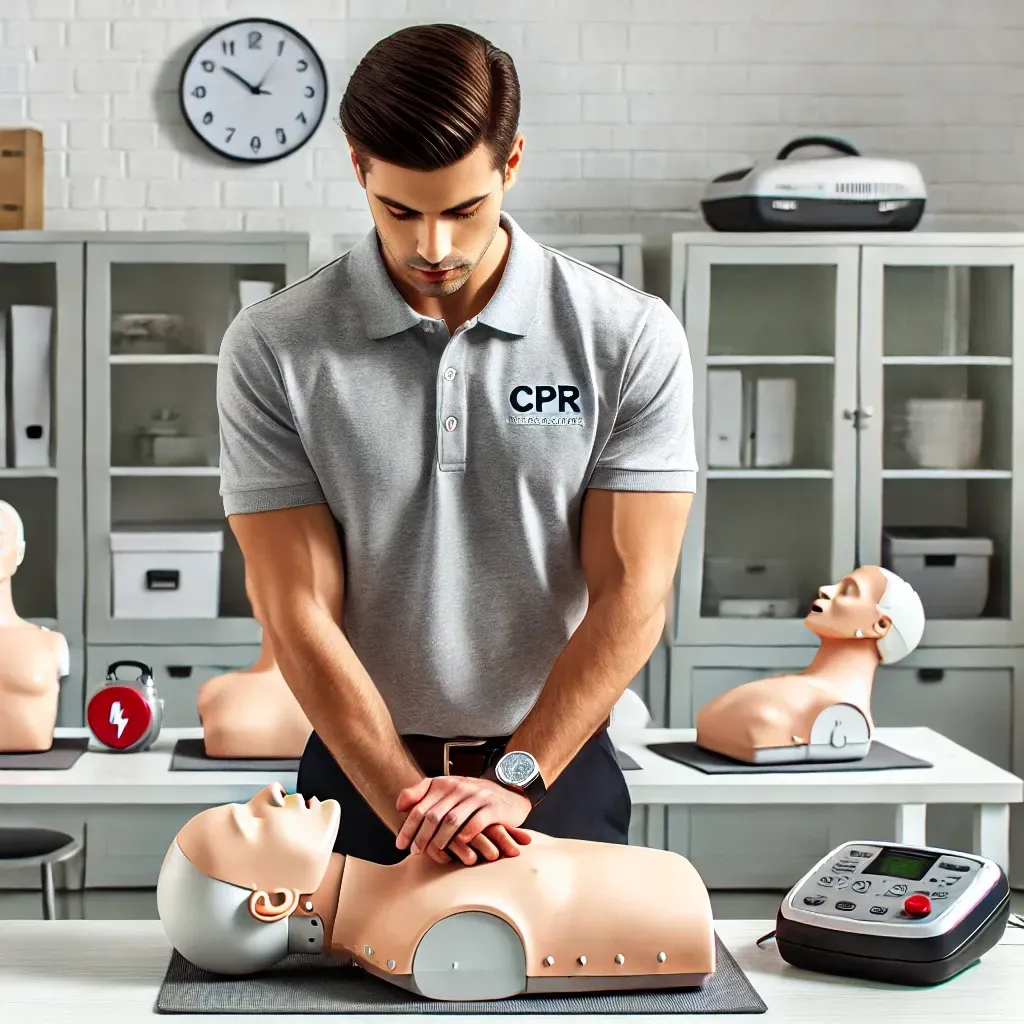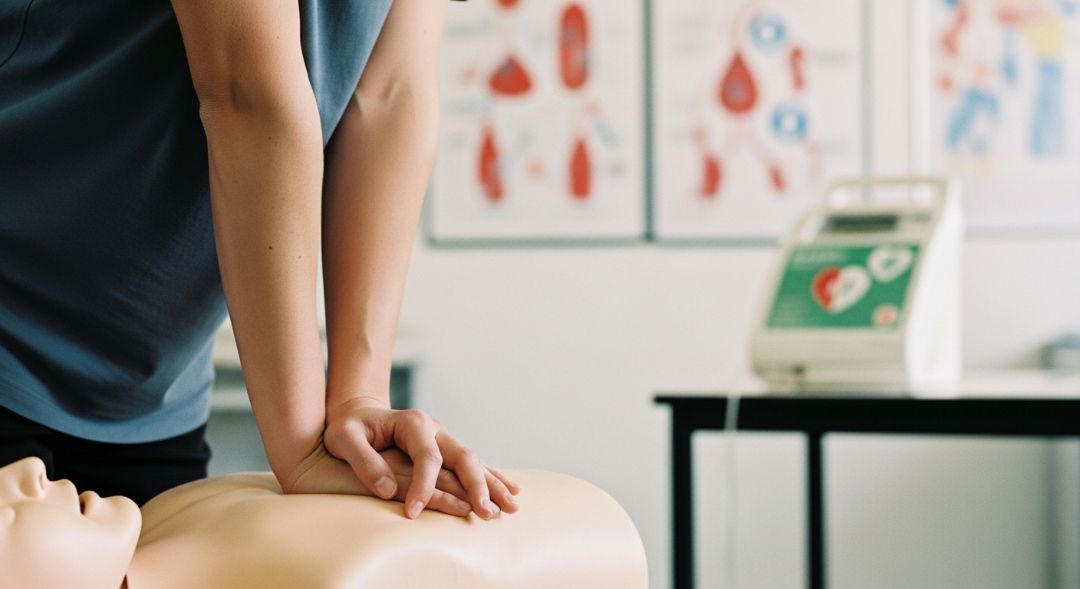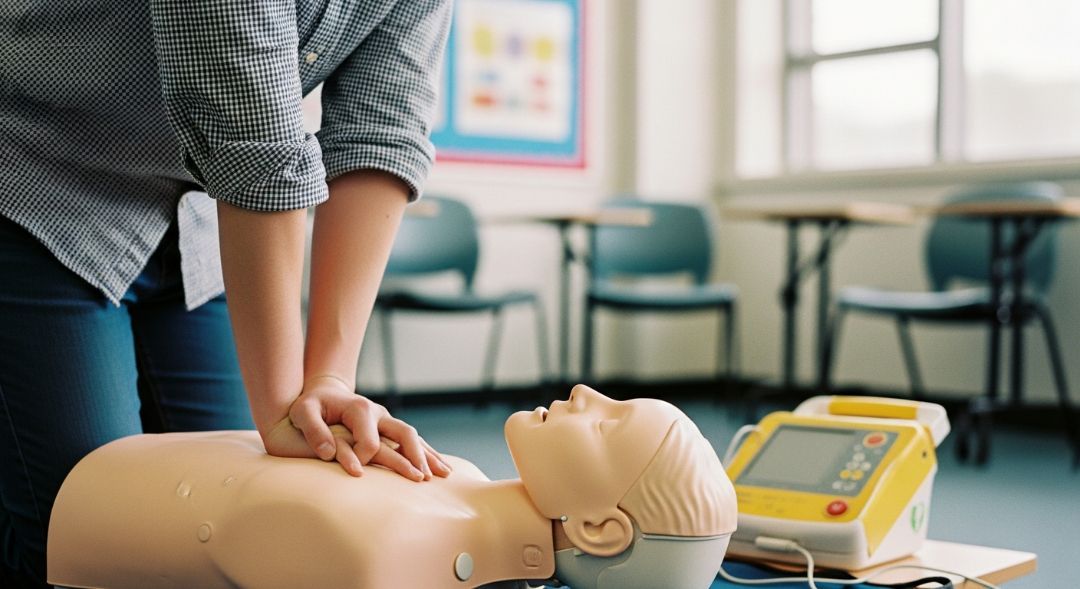On-Site First Aid, CPR & AED Training for Utility Companies
TLDR;
On-site First Aid, CPR, and AED classes for utility companies provide certified training at your location, ensuring OSHA compliance and preparing workers for emergencies.
CPR Professionals delivers programs recognized by the American Heart Association and the Red Cross, helping utility crews stay compliant and confident in high-risk environments.
Why On-Site Training Matters for Utility Companies
Utility companies face unique risks every day. Electrical shock, falls, remote worksites, and high-voltage hazards demand fast and effective response. When incidents happen, every minute counts. Having trained employees on the scene is the only way to meet OSHA requirements and protect your team.
OSHA regulations, such as 1910.151 and 1910.269, make it clear that employers must have trained responders available when crews are exposed to hazards. This is not optional. Compliance means certified training, verified skills, and scheduled refreshers.
With CPR Professionals, training is delivered where you work. Crews stay on-site, schedules remain uninterrupted, and learning ties directly to your workplace hazards.
OSHA and NFPA Training Standards for Utility Crews
- OSHA 1910.151 requires first aid responders when medical services are not close by. Utility crews often work in remote locations, making on-site responders essential.
- OSHA 1910.269 requires at least two trained employees when working on energized lines above 50 volts.
- NFPA 70E outlines requirements for electrical safety, including emergency response and shock treatment protocols.
Meeting these standards reduces liability, protects workers, and builds a culture of safety. Certification through CPR Professionals ensures your training aligns with both OSHA and NFPA requirements.
Utility Company First Aid Certification
Certification is more than a card. It is documented proof that your workforce is prepared. CPR Professionals provides:
- First Aid certification tailored for utility work
- CPR certification covering adult, child, and team response
- AED training including device use, maintenance, and inspection schedules
- Valid certifications recognized by AHA and Red Cross, meeting OSHA standards
Certification typically lasts two years, but many companies refresh skills annually to maintain confidence and compliance.
On-Site CPR Training for Utility Workers
On-site training eliminates barriers. Instead of sending crews to a training center, we bring instructors, equipment, and certification to your location.
Benefits include:
- Convenience: Train at the job site or office without downtime.
- Relevance: Practice in the same environment where emergencies may occur.
- Customization: Scenarios built around utility hazards such as electrical contact or remote incidents.
- Team coordination: Crews practice working together, not individually.
During CPR training, it’s crucial that utility crews not only practice teamwork but also understand the proper
chest compression rate for CPR to increase survival chances during cardiac emergencies. Reinforcing the correct pace and depth of compressions ensures that responders deliver high-quality CPR when it matters most.
AED Training On-Site for Utilities
AEDs are critical in responding to sudden cardiac arrest. For utility crews working in remote or high-risk areas, immediate AED access is non-negotiable.
On-site AED training includes:
- Device operation with live practice
- Pad placement and safety steps
- Battery and pad replacement schedules
- Proper storage and signage in crew vehicles or facilities
- Assigning responsibility for AED readiness checks
An AED is only effective if employees know how to use it and if the device is maintained properly. Training ensures both.
Blended Learning and Flexible Training Models
Utility crews work shifts, nights, and rotating schedules. Traditional classroom sessions do not always fit. CPR Professionals offers flexible training models to meet these challenges.
- In-Person On-Site: Full course delivered by certified
instructors with hands-on skills.
- Blended Learning: Online modules completed at the employee’s pace, followed by on-site skills testing.
- Remote Skills Verification: Live video instruction and verification for remote or spread-out teams.
This flexibility ensures all workers receive training without disrupting operations.
Emergency Response Training for Utility Companies
Emergency response for utility crews is different from other industries. Training must prepare employees for hazards unique to their work.
Key utility-specific elements include:
- Electrical shock release procedures
- Fall injury response
- Bleeding control in remote locations (where additional resources like
Rapid Rescue Kits can provide specialized emergency supplies for crews)
- Heat and cold exposure response
- Coordinating with dispatch and first responders
- Crew communication protocols during emergencies
When crews practice these skills on-site, they develop confidence to respond under real conditions.
Drills and Realistic Simulation for Utility Crews
Knowledge alone is not enough. Practical drills turn training into action. CPR Professionals builds realistic scenarios to test team response.
Examples include:
- Nighttime electrical contact incident
- Worker collapse during high-heat exposure
- Fall from height with fractures
- Simulated dispatcher call with location challenges
Drills assign roles such as rescuer, communicator, and AED operator. Crews learn to move as a unit, not as individuals. This coordination saves time and prevents confusion in real emergencies.
Equipment Readiness and AED Maintenance
Training is not complete without a plan for equipment readiness. AEDs, first aid kits, and emergency gear require scheduled inspections. Having the right emergency kit essentials on hand ensures that crews can respond effectively to injuries and sudden incidents, even in remote locations.
Key steps:
- Assign inspection duties to supervisors or safety officers
- Log battery and pad expiration dates
- Place AEDs in visible and accessible areas
- Check kits for missing or expired supplies
- Provide signage for quick access during emergencies
Consistency ensures equipment is ready when needed.
Measuring Training Effectiveness
Utility companies must track more than certification cards. Measuring effectiveness ensures training translates into workplace readiness.
Metrics to monitor:
- Percentage of workforce certified
- Drill response times
- Confidence levels from post-training surveys
- Frequency of refresher courses
- AED inspection compliance rates
Regular evaluation builds accountability and continuous improvement.
Choosing the Right Training Provider
Not all providers are equal. For utility companies, the right partner understands your hazards and compliance requirements.
When selecting a provider, look for:
- Certification recognized by AHA or Red Cross
- Experience training utility and field workers
- On-site delivery with real equipment
- Flexible scheduling for shift crews
- Ability to customize drills to your hazards
CPR Professionals specializes in utility industry training. We deliver certified programs that meet OSHA standards, improve preparedness, and strengthen workplace safety culture.
Frequently Asked Questions
Do utility workers need annual or biennial certification?
Certification typically lasts two years. Many companies refresh training annually to maintain OSHA expectations and skill retention.
Is remote training an option for utility crews?
Yes. Blended and remote verification models make training possible for crews in multiple locations.
What are OSHA’s requirements for crew size?
When two or more employees work on energized lines, at least two trained responders must be present.
Does on-site training include AED maintenance?
Yes. AED inspection and readiness checks are part of on-site AED training with CPR Professionals.
Building a Culture of Preparedness in Utility Work
On-site First Aid, CPR, and AED training prepares utility companies for real emergencies while keeping crews compliant with OSHA and NFPA standards. Certified employees mean safer crews, stronger compliance, and confidence in the field.
CPR Professionals delivers certified, on-site programs designed for utility workers. By training at your location, addressing your hazards, and ensuring compliance, we help your company build a culture of preparedness that protects employees and strengthens operations.
